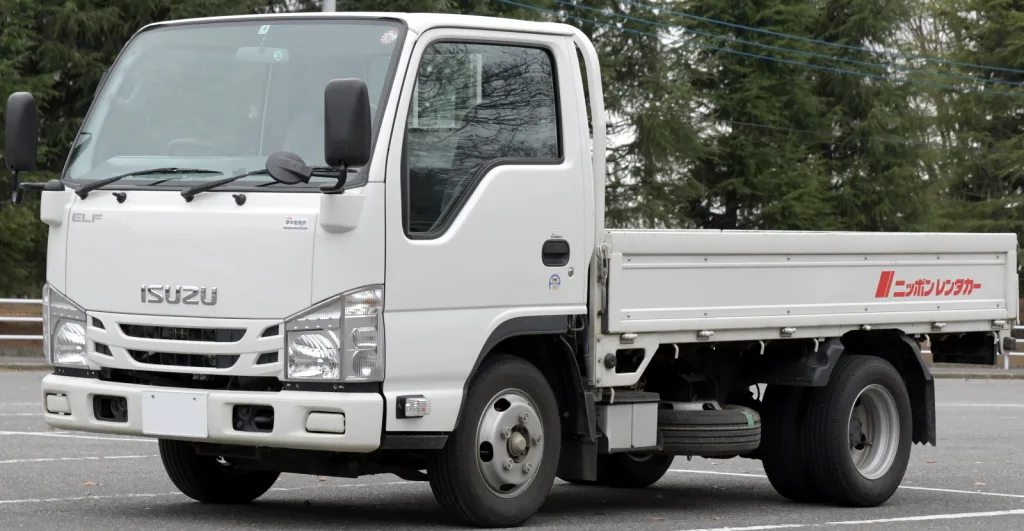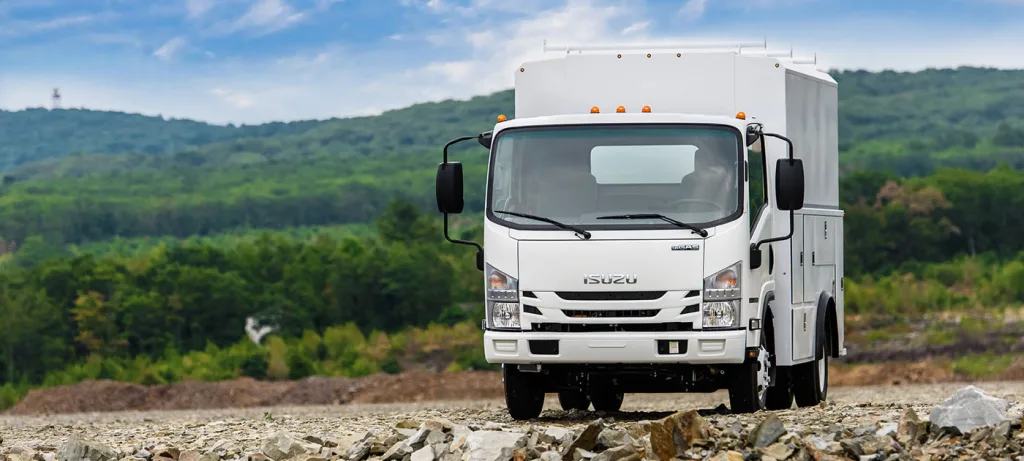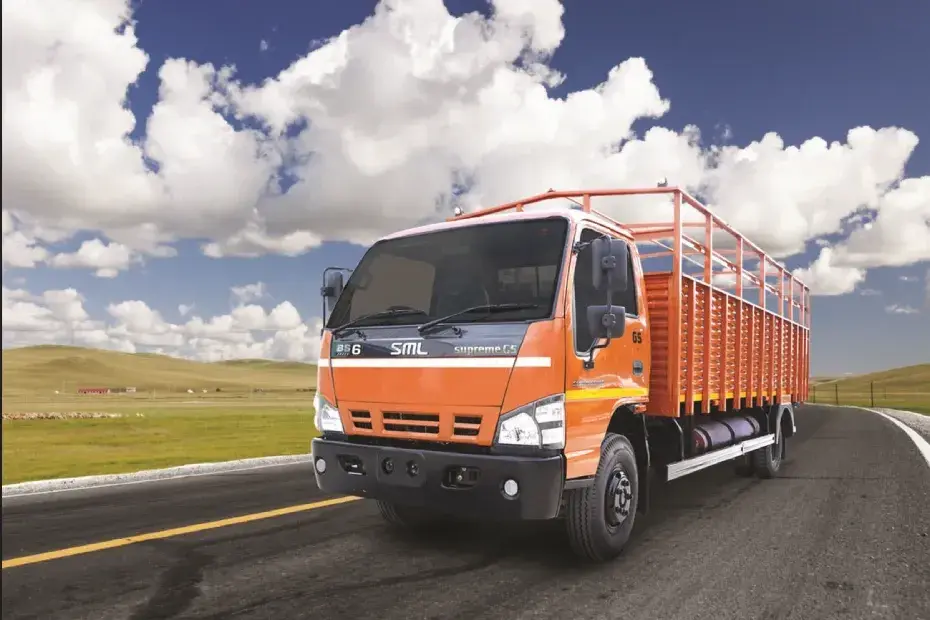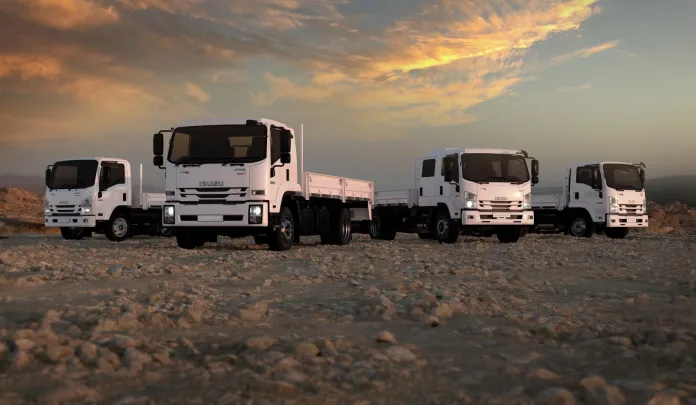The sun rises over a bustling distribution center as a medium-duty truck silently pulls up to the loading dock. No diesel rumble, no exhaust fumes—just the soft whir of an electric motor. This scene, once a futuristic fantasy, is rapidly becoming reality thanks to innovations like the newly unveiled Accelera electric powertrain for Isuzu trucks.
Standing in the demonstration area at Cummins’ technical center in Columbus, Indiana, I watched as engineers showcased what might be the most significant development in medium-duty trucking this year. The collaboration between Accelera (Cummins’ zero-emissions division) and Isuzu represents more than just another electric vehicle announcement—it signals a fundamental shift in how we think about commercial transportation.
“This isn’t just about replacing a diesel engine with batteries and motors,” explained Sarah Johnson, Accelera’s Director of Commercial Vehicle Electrification, as she guided me around the powertrain display. “We’ve reimagined the entire system from the ground up to meet the specific needs of fleet operators who rely on these vehicles every day.”
What makes this development particularly noteworthy is the pedigree behind it. Cummins brings nearly a century of powertrain expertise, while Isuzu’s reputation for building reliable commercial vehicles spans decades. Together, they’ve created something that addresses the real-world concerns that have kept many fleet managers hesitant about electric trucks.
The Technical Heart of the Electric Revolution
At the core of this innovation is a fully integrated system that combines next-generation battery technology, a proven eAxle, and sophisticated power controls. Let’s break down the key components:
| Component | Specification | Real-World Benefit |
|---|---|---|
| Battery Technology | Lithium Iron Phosphate (LFP) | Longer cycle life, enhanced safety, lower cost |
| Drive System | 14Xe eAxle with ELFA motor and inverter | Proven reliability: 30 years, 1 billion miles on road |
| Power Controls | PCAS 3.0 | 70% smaller, customizable, easy to service |
| Vehicle Class | 6 and 7 | Ideal for urban deliveries and regional routes |
| Production Timeline | Slated for 2027 | Strategic timing for infrastructure development |
| Manufacturing | Many components made in USA | Supports domestic production, potential incentives |
The choice of Lithium Iron Phosphate (LFP) battery chemistry is particularly significant. While some manufacturers have opted for higher energy density alternatives, LFP offers advantages that matter most to commercial operators: longer cycle life, improved safety, and lower costs over the vehicle’s lifetime.
“Fleet managers don’t just look at the sticker price,” Johnson noted. “They calculate total cost of ownership over hundreds of thousands of miles. That’s where this powertrain really shines.”

How the Isuzu Powertrain Transforms Commercial Trucking
Walking around the demonstration vehicle, I was struck by how seamlessly the electric components integrated into the familiar Isuzu truck platform. This isn’t a concept vehicle or a retrofit—it’s a purpose-built electric truck designed for the rigors of daily commercial use.
The 14Xe eAxle at the heart of the powertrain has already proven itself in other applications, with components that have accumulated over a billion miles of real-world operation. This track record addresses one of the primary concerns fleet operators have about switching to electric vehicles: reliability.
“When your business depends on your trucks showing up day after day, you can’t afford experimentation,” explained Michael Rodriguez, a fleet manager for a regional delivery company who was also attending the demonstration. “What impresses me about this system is that it’s built on proven technology, just applied in a new way.”
The power control and accessory system (PCAS 3.0) represents another significant advancement. At 70% smaller than previous versions, it’s more easily integrated into the vehicle while remaining accessible for service. For fleet maintenance teams, this means familiar service procedures and less downtime.
Benefits of Electric Trucks for Fleet Operators
The advantages of the Accelera electric powertrain extend beyond the technical specifications. For fleet operators considering an electric Isuzu truck, the benefits touch every aspect of operations:
- Reduced Operating Costs: Lower fuel and maintenance expenses over the vehicle’s lifetime
- Operational Flexibility: Ability to operate in zero-emission zones and during noise-restricted hours
- Driver Satisfaction: Quieter operation, less vibration, and smoother acceleration
- Sustainability Goals: Measurable reduction in carbon footprint and pollutants
- Future-Proofing: Protection against rising fuel costs and tightening emissions regulations
“We’re seeing increasing demand from our customers for zero-emission delivery options,” said Jennifer Martinez, sustainability director for a national logistics company. “Having electric trucks that can handle our routes without compromise would be a significant competitive advantage.”
The timing of this announcement—with production slated for 2027—aligns with projected improvements in charging infrastructure and potential regulatory changes. By the time these trucks hit the road, the ecosystem to support them should be substantially more developed than it is today.

The Competitive Landscape: Where Isuzu Electric Trucks Stand
The medium-duty electric truck market is becoming increasingly competitive, with established manufacturers and startups vying for position. How does the Accelera-powered Isuzu stack up against the competition?
| Manufacturer | Notable Features | Market Position |
|---|---|---|
| Isuzu (with Accelera) | LFP battery, proven eAxle, focus on medium-duty | Strong in ICE trucks, new to EV space |
| BYD | Extensive range, established in multiple markets | Leader in overall EV sales, growing in trucks |
| Tesla | Advanced tech, high performance, Autopilot | High-end market, delayed Cybertruck launch |
| Rivian | Innovative design, focus on last-mile delivery | Partnerships with major retailers |
| Ford | F-150 Lightning, leveraging existing customer base | Strong brand recognition in truck market |
What sets the Isuzu electric truck apart is its focus on practical, proven technology rather than headline-grabbing specifications. While some competitors tout longer ranges or faster charging, the Accelera-Isuzu collaboration prioritizes the factors that matter most to fleet operators: reliability, serviceability, and total cost of ownership.
“We’re not trying to reinvent the wheel,” Johnson told me. “We’re taking what works—Isuzu’s truck expertise and Cummins’ powertrain knowledge—and applying it to electric propulsion in a way that makes business sense for our customers.”
This approach may not generate the same excitement as some competitors, but it addresses the real concerns that have slowed electric truck adoption in the commercial sector.

Isuzu Electric Truck Price Considerations
One question that inevitably arises when discussing electric trucks is cost. While Accelera and Isuzu haven’t released specific pricing for the upcoming vehicles, understanding the economics is crucial for fleet managers planning future purchases.
“The initial purchase price will likely be higher than a comparable diesel truck,” acknowledged Johnson. “But that’s only part of the equation. When you factor in lower operating costs, potential incentives, and longer service life, the total cost of ownership becomes much more competitive.”
Based on industry trends, we can make some educated projections about the Isuzu electric truck price structure:
| Cost Factor | Diesel Truck | Electric Truck | Long-term Impact |
|---|---|---|---|
| Initial Purchase | Lower | Higher (+30-40%) | Higher upfront investment |
| Fuel/Energy | Higher | Lower (60-70% less) | Significant operational savings |
| Maintenance | Higher | Lower (40% less) | Reduced downtime and service costs |
| Residual Value | Established | Potentially higher | Better return on investment |
| Incentives | None | Potentially significant | Reduced effective purchase price |
The economics become particularly favorable for vehicles with high utilization rates and predictable routes—exactly the use case for many medium-duty trucks. As battery costs continue to decline and diesel prices face long-term upward pressure, the financial equation will increasingly favor electric options.
Cummins EV Division Accelera Leads Innovation
The development of this electric powertrain highlights Accelera’s growing role in Cummins’ transition to a zero-emissions future. As the company’s dedicated zero-emissions division, Accelera represents a significant investment in technologies that will eventually replace the diesel engines that built Cummins’ reputation.
“Cummins has been powering the world for over a century,” said David Carson, Vice President at Cummins. “Accelera ensures we’ll continue to do so for the next century, just with different technologies.”
This isn’t Accelera’s first foray into electric powertrains, but the collaboration with Isuzu represents a significant step forward in commercializing the technology for mainstream applications. By focusing on the medium-duty segment—classes 6 and 7—they’re targeting vehicles that operate in predictable patterns well-suited to current battery technology.
The partnership also demonstrates how traditional manufacturers are adapting to the electric transition. Rather than developing everything in-house, companies are forming strategic alliances that combine complementary expertise. Isuzu brings truck design and manufacturing experience, while Accelera contributes electric powertrain knowledge.
The Road Ahead: Implementation and Adoption
With production slated for 2027, fleet operators have time to prepare for the transition. This timeline allows for infrastructure development, driver training, and financial planning—all crucial elements for successful electrification.
“We’re already working with charging providers to ensure our customers have the support they need,” Johnson explained. “The goal is to make the transition as seamless as possible.”
For many fleets, the shift to electric trucks will be gradual, with electric vehicles initially handling routes that best match their capabilities. As charging infrastructure expands and battery technology improves, the range of suitable applications will grow.
The domestic manufacturing component of the Accelera electric powertrain may also prove significant as government incentives increasingly favor locally produced components. This could provide a competitive advantage in markets where such incentives play a role in purchasing decisions.
Also Read: Maruti Suzuki’s e-Vitara Launch: A New Chapter in Indian EV
Frequently Asked Questions About Electric Isuzu Trucks
When will the Accelera-powered Isuzu electric trucks be available?
Production is scheduled to begin in 2027. This timeline allows for further development of the technology and charging infrastructure, ensuring the vehicles enter the market when conditions are optimal for adoption.
What is the expected range of these electric trucks?
While specific range figures haven’t been announced, the focus on medium-duty applications suggests these vehicles will be designed for daily routes of 100-200 miles, which covers the needs of most urban and regional delivery operations.
How does the Lithium Iron Phosphate (LFP) battery differ from other EV batteries?
LFP batteries offer several advantages for commercial applications: longer cycle life (more charge/discharge cycles before degradation), enhanced safety with better thermal stability, and lower cost due to more abundant materials. The trade-off is slightly lower energy density compared to some alternatives.
Will these trucks qualify for government incentives?
While incentive programs may change by 2027, the domestic manufacturing component positions these vehicles well for potential incentives. Fleet operators should monitor federal and state programs as the launch date approaches.
How does the total cost of ownership compare to diesel trucks?
Initial purchase price will likely be higher, but lower operating costs (fuel and maintenance) are expected to offset this over the vehicle’s lifetime. For high-utilization applications, the total cost of ownership could be lower than comparable diesel vehicles, especially if diesel prices rise or carbon taxes are implemented.
Conclusion: The Electric Future of Commercial Transport
As I left the demonstration center, the significance of what I’d seen became clear. The Accelera electric powertrain for Isuzu trucks isn’t just another incremental step toward electrification—it’s a practical, commercially viable solution designed by companies that understand what fleet operators need.
This development represents the maturation of electric truck technology, moving beyond flashy prototypes to purpose-built vehicles that can handle the daily demands of commercial operation. By focusing on reliability, serviceability, and total cost of ownership, Accelera and Isuzu are addressing the factors that will drive widespread adoption.
The 2027 production target may seem distant, but it reflects a realistic timeline for both technological refinement and market readiness. By the time these trucks hit the road, they’ll enter a landscape where electric commercial vehicles are increasingly common and the infrastructure to support them is more robust.
For fleet operators, now is the time to begin planning for this electric future—evaluating routes, assessing charging needs, and calculating the economics for their specific operations. The transition won’t happen overnight, but with developments like the Accelera-Isuzu collaboration, it’s no longer a question of if commercial trucking will go electric, but when and how.
The silent revolution in trucking has begun, and it’s powered by innovations like the Accelera electric powertrain for Isuzu trucks.


